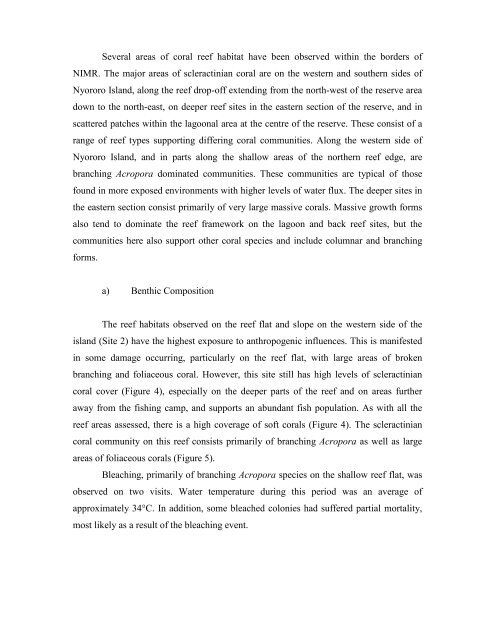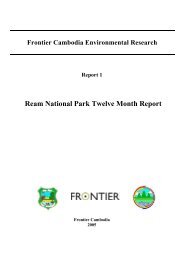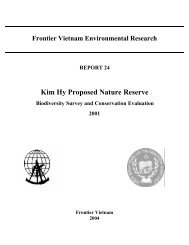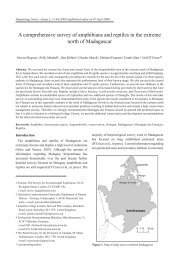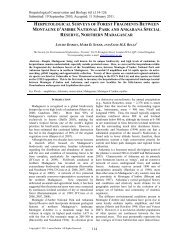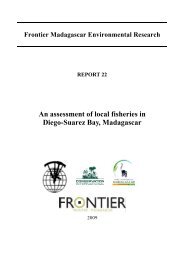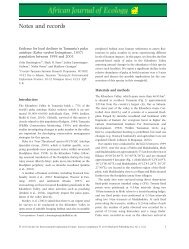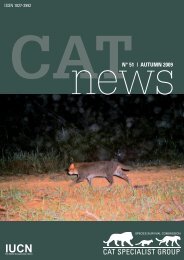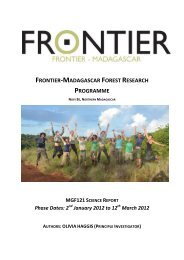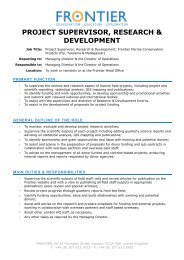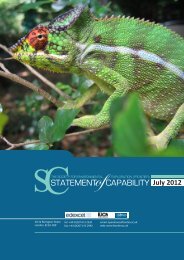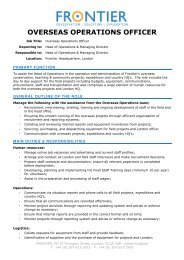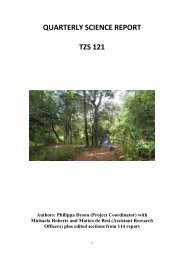Biophysical Survey of Mafia Island Marine Reserves
Biophysical Survey of Mafia Island Marine Reserves
Biophysical Survey of Mafia Island Marine Reserves
You also want an ePaper? Increase the reach of your titles
YUMPU automatically turns print PDFs into web optimized ePapers that Google loves.
Several areas <strong>of</strong> coral reef habitat have been observed within the borders <strong>of</strong><br />
NIMR. The major areas <strong>of</strong> scleractinian coral are on the western and southern sides <strong>of</strong><br />
Nyororo <strong>Island</strong>, along the reef drop-<strong>of</strong>f extending from the north-west <strong>of</strong> the reserve area<br />
down to the north-east, on deeper reef sites in the eastern section <strong>of</strong> the reserve, and in<br />
scattered patches within the lagoonal area at the centre <strong>of</strong> the reserve. These consist <strong>of</strong> a<br />
range <strong>of</strong> reef types supporting differing coral communities. Along the western side <strong>of</strong><br />
Nyororo <strong>Island</strong>, and in parts along the shallow areas <strong>of</strong> the northern reef edge, are<br />
branching Acropora dominated communities. These communities are typical <strong>of</strong> those<br />
found in more exposed environments with higher levels <strong>of</strong> water flux. The deeper sites in<br />
the eastern section consist primarily <strong>of</strong> very large massive corals. Massive growth forms<br />
also tend to dominate the reef framework on the lagoon and back reef sites, but the<br />
communities here also support other coral species and include columnar and branching<br />
forms.<br />
a) Benthic Composition<br />
The reef habitats observed on the reef flat and slope on the western side <strong>of</strong> the<br />
island (Site 2) have the highest exposure to anthropogenic influences. This is manifested<br />
in some damage occurring, particularly on the reef flat, with large areas <strong>of</strong> broken<br />
branching and foliaceous coral. However, this site still has high levels <strong>of</strong> scleractinian<br />
coral cover (Figure 4), especially on the deeper parts <strong>of</strong> the reef and on areas further<br />
away from the fishing camp, and supports an abundant fish population. As with all the<br />
reef areas assessed, there is a high coverage <strong>of</strong> s<strong>of</strong>t corals (Figure 4). The scleractinian<br />
coral community on this reef consists primarily <strong>of</strong> branching Acropora as well as large<br />
areas <strong>of</strong> foliaceous corals (Figure 5).<br />
Bleaching, primarily <strong>of</strong> branching Acropora species on the shallow reef flat, was<br />
observed on two visits. Water temperature during this period was an average <strong>of</strong><br />
approximately 34°C. In addition, some bleached colonies had suffered partial mortality,<br />
most likely as a result <strong>of</strong> the bleaching event.


